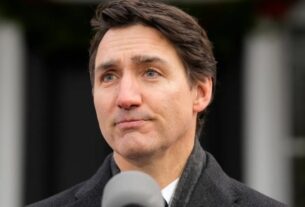1. Federal and Khyber Pakhtunkhwa
Formerly known as the Northwest Frontier Province (NWFP), Khyber Pakhtunkhwa (KP) is a historically important region in Pakistan. It played a vital role in shaping the country’s political, economic, and social systems. KP’s relationship with the federal government was influenced by ethnic diversity, governance challenges, and demands for autonomy.
2. The Background
Khyber Pakhtunkhwa lies at the crossroads of Central and South Asia. This location made it a key area for migrations and invasions. As a result, it has a diverse population with strong tribal roots. After independence, integrating KP into Pakistan’s federal system was difficult for both federal and provincial governments.
a. Ethnic and Tribal Diversity in KP
The Pashtuns, KP’s main ethnic group, have maintained strong tribal traditions. They often resisted centralized rule. This posed challenges for Pakistan’s early federal government, especially in tribal areas like FATA, where leaders demanded autonomy.
3. Post-Partition Political Dynamics
Khyber Pakhtunkhwa’s unique culture gave it a special status after independence. Some groups initially opposed joining Pakistan. They called for an independent Pashtunistan or greater local control. This political instability laid the foundation for the first major conflict.
4. Causes of the First Conflict
The conflict arose from combined political, economic, and social pressures. Key issues included governance, resource control, and ethnic representation. These tensions tested Pakistan’s new federal structure.
a. Political Representation and Autonomy
KP leaders wanted control over local governance and resources. Meanwhile, the federal government aimed to centralize power to ensure national unity. This clash created ongoing political tension.
b. Economic Inequality and Resource Control
KP lagged behind Punjab and Sindh in development. Its harsh terrain and weak infrastructure made progress hard. Although rich in natural resources, KP did not control them. The federal government did, worsening local grievances.
c. Ethnic and Cultural Divide
Many Pashtun leaders felt underrepresented at the national level. Cultural differences between KP and Punjab fueled a sense of marginalization. This deepened frustration with federal policies.
5. Power Struggles Between Federal and Provincial Governments
Pakistan’s early federal system struggled to balance central control with provincial autonomy. The conflict in KP became a clear example of this national dilemma.
a. Centralized Governance Approach
The federal government believed a strong center was needed for stability. But KP leaders wanted more local control. These conflicting views led to further division.
b. Push for Provincial Rights
KP’s leaders, supported by tribal elders, demanded more say in local matters. They wanted control over taxes, revenue, and natural resources. The federal government saw this as a threat to unity, increasing tensions.
6. The First Armed Conflict in the Federal System
These rising tensions led to Pakistan’s first armed conflict between a province and the federal government. It had lasting effects on national policy and federal relations.
a. Nature of the Conflict
Fighting occurred between KP’s forces and federal troops, sometimes involving tribal militias. KP leaders resisted federal military and political pressure. The conflict exposed the limits of a centralized system.
b. Impact and Aftermath
In response, the federal government began giving more power to provinces. This included shared control of resources and increased political inclusion. The conflict highlighted the need to address regional inequalities.
7. Long-Term Effects on Federal-Provincial Relations
The KP conflict reshaped Pakistan’s federal structure. It triggered reforms and ongoing debates over provincial rights.
a. Constitutional Reforms and Autonomy
The conflict led to major constitutional changes. These reforms increased provincial autonomy and aimed to balance power more fairly. They helped prevent future clashes.
b. Role of Political Leadership
The conflict also emphasized leadership’s role in shaping federal relations. KP’s leaders, especially from the Pashtun community, continued pushing for equal rights and recognition.
c. Regional Development Issues
Despite reforms, KP’s development lagged behind other regions. Calls for more investment in healthcare, education, and infrastructure continue. These issues still cause federal-provincial tension.
8. Modern-Day Relevance of the Conflict
The issues that caused the first conflict still matter today. Political representation, fair resource sharing, and equality remain key concerns in KP’s relationship with the federal government.
a. Devolution of Power
Efforts to devolve power gained momentum after the 18th Constitutional Amendment. This gave provinces more control, addressing long-standing demands. However, challenges in implementation remain.
b. The Future of Federal-Provincial Relations
Relations between KP and the federal government will continue to evolve. Solving core issues like representation and development is essential for national unity and lasting peace.




